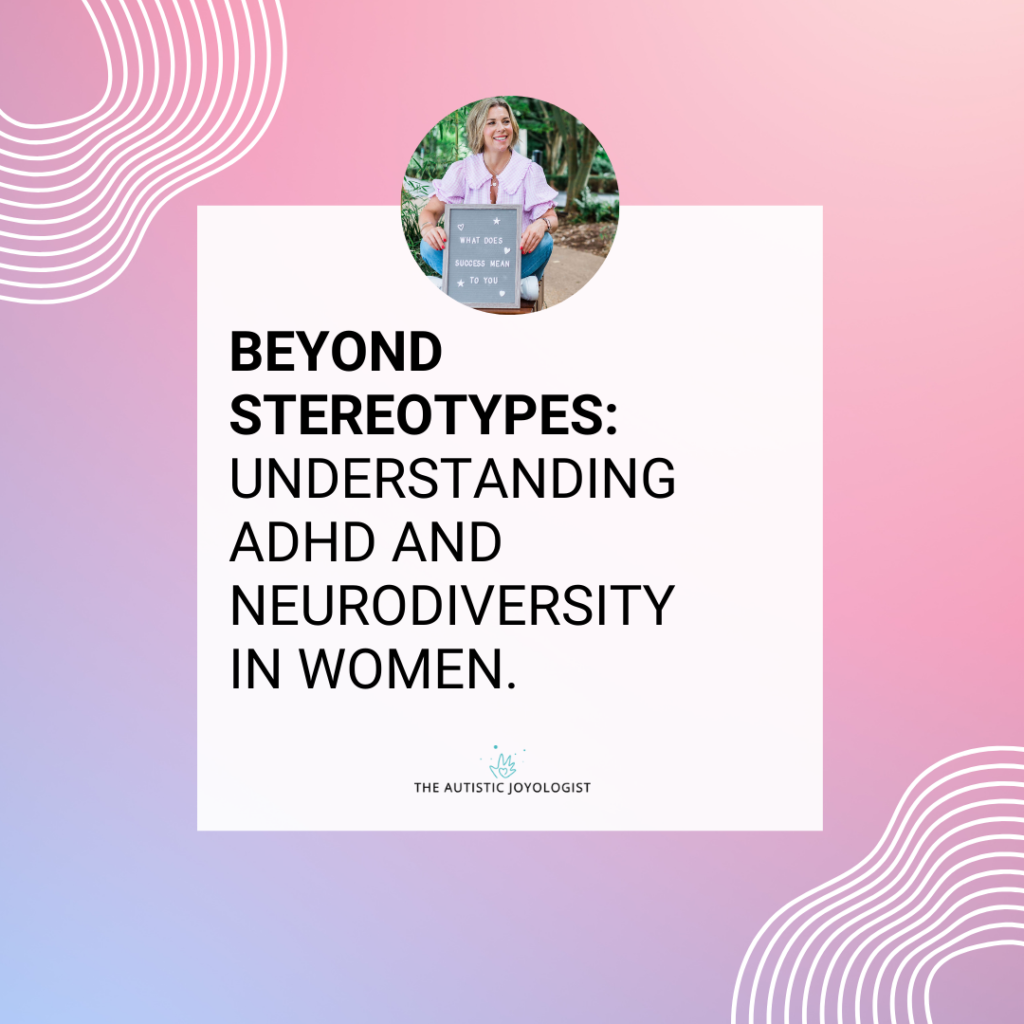
When ADHD was first suggested to me, I immediately pictured a young boy: hyperactive, impulsive, unable to sit still. That wasn’t me, so I brushed off the idea. But this reaction isn’t uncommon—it’s rooted in stereotypes about ADHD and neurodiversity that, for decades, have obscured the experiences of many people, especially women.
The reality is that ADHD manifests differently in each person. For women, ADHD symptoms are often more internalised and less obvious to the outside world. Many of us learn to “mask” these struggles to fit into societal expectations, which can lead to a delayed diagnosis or no diagnosis at all.
So, why do these stereotypes exist? How do they impact neurodivergent women, and why is it time for society to embrace a fuller understanding of ADHD and neurodiversity?
Understanding ADHD: More Than Hyperactivity
The traditional ADHD stereotype often includes high-energy, hyperactive behaviours. These traits are more commonly observed in young boys, so much so that the core research and diagnostic criteria for ADHD have primarily been based on studies of young, white boys.
Researchers have noted that this bias affects the tools used for diagnosis, making it more challenging to identify ADHD in women and people from diverse backgrounds. For example, a study in The Journal of Clinical Child and Adolescent Psychology found that diagnostic assessments and observational studies on ADHD have long leaned heavily toward hyperactive presentations, creating a significant blind spot in our understanding of ADHD’s full spectrum of symptoms.
ADHD in women can look very different. We might experience inattentiveness, difficulty in organising thoughts, or struggles with emotional regulation—all of which can fly under the radar. As Professor Stephen Hinshaw, a psychologist specialising in ADHD, points out, women are more likely to internalise their symptoms, presenting as “spacey,” daydreamy, or forgetful rather than overtly hyperactive. He writes, “The subtle, internalised symptoms are less likely to attract attention, and this leads to a unique pathway of challenges for females with ADHD.”
“The subtle, internalised symptoms are less likely to attract attention, and this leads to a unique pathway of challenges for females with ADHD.”
The Role of Camouflaging in Delayed Diagnoses
From a young age, many women develop strategies to mask or “camouflage” their neurodivergent traits. This often involves suppressing behaviours, taking on an extreme attention to detail to avoid criticism, or mimicking social cues to fit in with neurotypical expectations. Research from the British Journal of Clinical Psychology shows that this camouflaging has a significant mental health impact. Women who consistently mask their ADHD symptoms are more prone to exhaustion, anxiety, and feelings of self-doubt. They may even question whether their struggles are legitimate, leading to further self-criticism and a delay in seeking help.
This masking also complicates diagnosis. In fact, a Lancet Psychiatry review found that women with ADHD are frequently diagnosed up to five to ten years later than their male counterparts. A later diagnosis can mean that women miss out on critical support systems and interventions that might have helped them manage their ADHD more effectively during pivotal stages in life. Clinical psychologist Dr. Michelle Frank notes, “Women with ADHD often feel immense pressure to ‘have it all together,’ leading them to mask their difficulties at a great personal cost.”
“Women with ADHD often feel immense pressure to ‘have it all together,’ leading them to mask their difficulties at a great personal cost.”
Why Stereotypes Are Damaging for Neurodivergent Women
These stereotypes don’t just limit our understanding—they shape our self-perception and can lead to what psychologists call “stereotype threat.” This concept refers to the negative impact of internalising stereotypes, which has been shown to affect performance and self-worth. A well-known study from Psychological Science demonstrated that women who overheard a stereotype about poor female math performance before taking a test scored significantly lower than those who didn’t. When it comes to ADHD and neurodiversity, believing in stereotypes can cause us to limit ourselves or question our capabilities.
These biases also shape the way society views neurodivergent people, often casting them as less capable or intelligent. But as Dr. Devon Price, an author and social psychologist, asserts in Unmasking Autism, “Neurodivergent people often bring unique perspectives and strengths to the table, but these can only be realised when society sheds its harmful assumptions and makes space for diverse ways of thinking.”
ADHD and autism are spectrum conditions, meaning they encompass a wide range of experiences and abilities. Not every individual with ADHD will have the same set of strengths or challenges, and no two people experience neurodiversity in the same way. Recognising this diversity is critical for fostering inclusion, as it moves us beyond limited definitions and stereotypes.
Embracing Neurodiversity: A Path Forward
To embrace neurodiversity, we need to shift our focus from trying to “fix” or “normalise” neurodivergent people to understanding and celebrating what makes them unique. Dr. Thomas Armstrong, author of The Power of Neurodiversity, highlights that “different does not mean deficient,” and points out the value of understanding neurodivergent traits as variations in human cognition rather than flaws to be corrected.
There are plenty of positive examples of this shift. Social media communities, like the @ADHD_Love Instagram account, offer support and advocacy for people with ADHD and autism. Created by a couple where one partner is neurodivergent, this platform provides practical advice, fosters community, and raises awareness about the realities of neurodiversity. Such spaces are vital for breaking down stereotypes, as they allow neurodivergent people to share their lived experiences directly, fostering empathy and understanding.
If you’re a neurodivergent woman, know that your experience is valid, your strengths are real, and your challenges are not something you need to hide.
Embracing the real you—the brilliant, extraordinary you—means stepping beyond the need to fit in and instead finding pride in standing out.
As we continue this journey together, I hope you discover the unique potential within you that can shine when you move beyond stereotypes and embrace your authentic self.